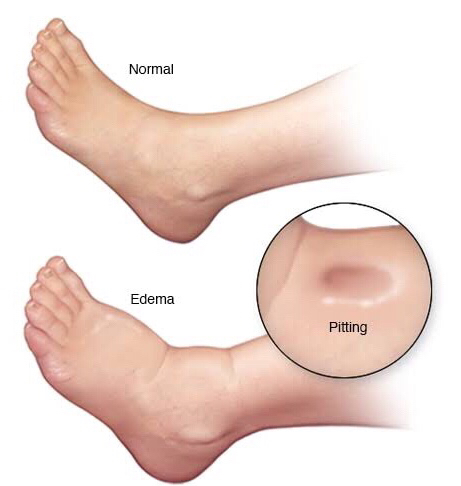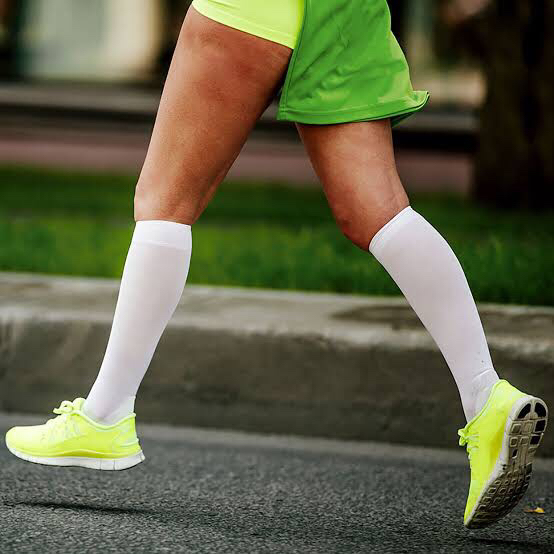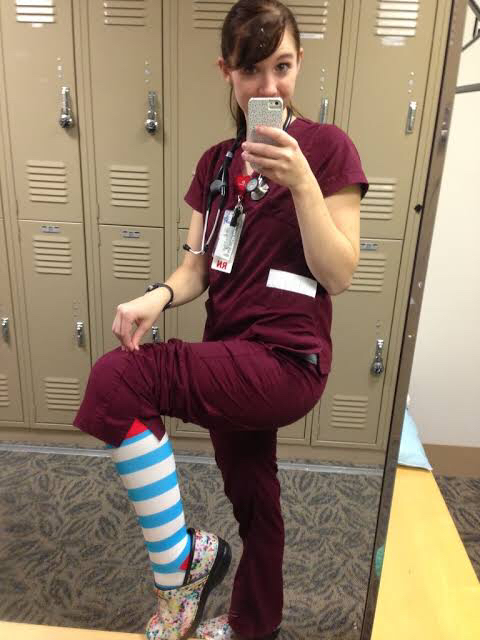Why do you need to worry about swelling

Swelling, especially in the lower extremities, is uncomfortable and often painful. The condition can be exacerbated by standing for long periods of time, sitting in a confined position, or lying down with your legs lower than your heart. If left untreated swollen legs or feet start to feel heavy and cause general lethargy. The skin can ‘pit’ if the swollen area is depressed, which looks unsightly and causes bloating. Also, physical changes can occur to the skin’s condition around the swollen area, which are irreversible—the skin may thicken and lose its elasticity.
What causes swelling
There are numerous reasons for swelling, some are more dangerous than others, but all are equally uncomfortable and require some form of therapy. A medical condition, such as venous insufficiency, obesity, diabetes and many others, often cause swelling in the feet and legs. These conditions should be treated by a physician, but during treatment, symptoms can be managed by wearing compression socks to reduce painful swelling.

Injury, such as a sprained ankle often causes swelling. Knee-high compression socks are ideal for supporting the leg and reducing swelling for these type of minor ailments.

Pregnancy often causes swelling in the legs, feet, hands and face. This is usually a normal side-effect of the condition and shouldn’t cause alarm unless the onset is sudden, extremely painful or excessive. Swelling during pregnancy prepares the body for the fetus, and is called edema, but for many woman the condition is uncomfortable and often very painful. Extra pressure on the veins, caused by liquid retention and buildup can result in varicose veins and even DVT(Deep Vein Thrombosis) and might occur during or after pregnancy if not properly managed. Low gauge (20mmHg-30mmHg) knee-high compression socks can do marvels to relieve this condition, protect the expectant mother from venal complications and generally make pregnancy easier to endure.

Career related edema can occur, particularly in patients who spend too much time on their feet, such as waitresses, nurses, bank tellers and shop assistants to name a few. If your ankles swell as a result of standing or sitting in a confined position due to your job’s requirements, you can most certainly benefit from the soothing therapeutic advantages that result from the use of compression socks.

Lately, sportsmen and women, in particular, athletes, have embraced compression socks to manage swelling during a period of exercise, as well as during decompression time—such as after a run.
Endurance runners wear compression socks to support their muscles and veins when running, and if they don’t wear them while running, they put them on in the aftermath, which results in improved circulation, muscle support and reduced swelling in the calves and feet. Not only does this relieve the symptoms associated with intense exercise, it brings comfort and pain-relief to sportspeople of all ages.
Let’s face it if your feet swell up after a run, you won’t be running the next day. Often runners need to optimize their endurance so that they can compete in triathlons and other events, which take place over a number of consecutive days. So, in order to remain competitive and comfortable, some sportspeople have a secret up their sleeve—compression socks.
Popular Articles on ComproGear
Best Compression Socks for Sitting All Day Targeted to Prevent Leg Swelling (Edema)
With age metabolism slows down and the body’s organs fail to work as well as they used too. Even if a person is healthy for their years, certain functions no longer work perfectly. One of the primary failings is usually circulation, which can become sluggish the older a person gets. Generally, this results in swelling, which puts added pressure on venal capacity. If swelling is controlled, older people usually experience improved health, which contributes towards their longevity. Additionally, the superior support compression socks offer for slack muscles and brittle bones, benefits the aged positively. For many compression socks simply become their very best friend.
What can occur if swelling is left unchecked

Swelling, especially in the legs and ankles is a very common issue. Yet, despite this factor, if swelling is unheeded and left untreated, more serious health problems can occur. The most prevalent of these is venal degeneration. Often swelling is initially caused by veins that have become too weak to do their job properly, sometimes the valves don’t work the way the are supposed to and blood, which should be pushed to the heart, falls back into the vein. This condition, which is known as venous insufficiency, almost always results in swelling of the ankles, feet and lower legs. So, mild venous insufficiency can cause swelling, but due to buildup of fluids in the lower body, veins come under more pressure. This causes a snowball effect— venous insufficiency…swelling…venous insufficiency gets worse…more swelling occurs…embattled veins can cause clots to form…if a clot travels to the lungs the results called, Pulmonary embolism, may end in fatality.
Swelling may indicate a degenerative condition, such as heart failure. Heart failure, which is usually accompanied by shortness of breath and a number of other symptoms, always results in swelling in the lower extremities. This disease requires the assistance of a physician, but the side effects of swelling, exacerbate the malady, and as a patients symptoms deteriorate, swelling increases, which also contributes to further complications for the heart.
Studies are conclusive, compression socks reduce swelling, limiting a knock-on effect, which results in less pressure on the veins and heart. As a result overall health improves once swelling is controlled.
What are compression socks

Venous insufficiency and swelling are manageable conditions and compression socks or stockings assist in this endeavor. Compression socks are a type of hosiery particularly engineered to reduce the symptoms of edema, they regulate blood flow by “squeezing” blood towards the heart, and not allowing it to “pool” in the feet or lower legs. Blood can collect in the lower body when the veins are incapable of pumping it effectively upwards—swelling and venous rupture can result. Extra strength elastic is used in the construction of compression socks to “push” blood and other undesirable liquids away from areas that can cause health issues, towards the cleansing ventricles of the heart, which immediately alleviates the symptoms associated with these conditions. Some socks are knee-high, while others are thigh-high, and each serves a different purpose—the knee-high version is specifically manufactured to reduce and control swelling.
Two main reasons for wearing compression socks

As with most things in life, you either ‘fix it’ or prevent it, and it’s definitely the case with compression socks. Wearing graduated pressure socks as a medically corrective measure will, with regular application, improve symptoms. However, what if you are experiencing warning signs, such as intermittent swelling as a result of your job? Perhaps spider veins, you’ve never seen before are visible on your legs, maybe your veins are under pressure due to various factors, and you fear that the condition could deteriorate. Well, the best idea would be to prevent the onset of more serious complications by giving your body a defense mechanism. Wearing socks, which improve your blood circulation, will stop secondary swelling in its tracks and give the veins an opportunity to do their work properly. Correctly fitted socks that are worn as prescribed can only improve your overall health and give your body a chance against developing serious medical conditions, which might be much harder to treat once they’ve begun.
How do compression socks alleviate swelling?

Graduated “squeeze” control makes knee-high compression socks much sought after. Several scientific studies agree that socks, which are tight at the ankle, but gradually become looser over the leg, are the perfect defense against the continued discomfort of swollen feet and venous insufficiency. If you feel that you’d like to experience the health-improving benefits of compression socks, it’s best to seek the advice of an experienced physician, particularly if you have pre-existing medical complications. A physician can guide you in methods of therapy that suit your condition best. Peripheral treatments, be they medical or physiological are often recommended in addition to wearing compression socks. These extraneous therapies can only assist. A physician will also advise on which types of socks to wear, the size you should buy and various side-effects that you should look out for.
Compression socks are also available without prescription—both online and over the counter. If you do not suffer from a degenerative disease and want to simply reduce swelling in your legs, it’s more than possible to investigate the varieties of socks on offer and choose the type which will alleviate your symptoms. Generally, these stockings improve blood circulation and prevent the build up of liquid in the legs, selecting the best pair of socks will go a long way to improving these conditions.
Different varieties of compression socks
Various categories of compression socks are available and usually exert a pressure of 20 to 40 mmHg. Broadly, there are 4 types.
- Type 1: Exerts pressure under 20mmHg, and is suitable for patients with swollen legs, better known in medical circles as edema.
- Type 2: Exerts pressure of between 20mmHg and 30mmHg and are usually prescribed for patients suffering from venous insufficiency or who are prone to varicose veins.
- Type 3: Exerts pressure of between 30mmHg and 40mmHg. These are best for patients susceptible to chronic venous insufficiency.
- Type 4: Exerts pressure of above 40mmHg and are used to alleviate symptoms of lymphoedema, which is caused by a blockage in the lymphatic system.
So, for swollen leg treatment, the mildest pressure type is best, but attention must be given to selecting the right size, fitting them properly and wearing them correctly. These factors influence the effectiveness of the preventative treatment that these socks are meant to perform.
How to choose the best pair?
Once you’ve established which type of sock is best for you, the next consideration is budget. Compression socks range in price according to the manufacturer and outlet selling them. Quality, is key and you should talk to your doctor or pharmacist about the various options available so that you can decide on what to buy. The pair you choose should offer graduated pressure relief and be tighter at the ankle, and looser higher up on the leg.
How to fit your socks

Selecting a pair of socks that are too tight or loose will reduce effectiveness and could actually cause your health to deteriorate. So selecting the right “fit” is absolutely vital. A snug-fit is what you should aim for, but the socks must not cause painful discomfort. The trick here is to measure your legs and feet and use an approved size chart to gauge which socks will fit you best. A pharmacist or even your physician can assist you if you’re unsure, so seek out additional advice if you need it, because in this instance it’s far better to be safe than sorry.
Measuring your legs for knee-high compression socks isn’t too difficult if you follow the guidelines below:
- Have a note taking app on your device ready to jot down your measurements, or use a pen and paper.
- If your legs swell during the day, you need to take your measurements when they are at normal girth. This is best done early in the morning as soon as you get out of bed.
- Use a reliable tape measure, calibrated in the correct manner, e.g.: centimeters for the US or inches in the UK.
- If you don’t own a tape measure you can download and print one out on a home printer.
- Stand upright with the leg uncovered. Do not wear slippers or shoes.
- Do not tense your muscles, see that you stand in a relaxed manner.
- Begin by measuring the distance from the floor to the area just below the dent at the back of your knee.
- Next, measure the ankle at its narrowest point, just above the protruding bone above the foot.
- Lastly, measure the calf at its widest girth.
- Compare your details to the size chart provided by the seller for the compression socks you want to buy.
- Select the best match for the measurements you’ve taken.
Be aware that you are unlikely to find an exact match—you need to select a size by choosing the best match that falls within a range of values. Additionally, you might benefit if you get a friend, family member or your health carer to assist you in taking measurements. If you are unsure, ask the vendor for advice and have your measurements ready as they’ll need them to assist you.
How to put your socks on.

Putting your compression socks on is another aspect that may take some getting used to. Once you have a little experience, though, you shouldn’t find this too much of a chore. Ensuring that you wear your socks correctly is also very important if you want to reduce swelling in your legs.
It’s best to either sit or lie down in a comfortable position, next fold the socks down in an accordion fashion. Starting at the toe, roll the sock up, over the foot, then onto the ankle, making certain that no bunching occurs. Continue up the leg, until your sock fits snugly under the knee. If you experience any difficulty engage the assistance of a friend, family member or health carer.
How to wear compression socks
Obviously, wearing your socks correctly is as important as fitting them. Socks should be worn during the day and removed at night when you retire. Generally, a good practice to follow is to put them on as soon as you get out of bed and to wear them for at least 10-12 hours per day. Patients often find that their health improves remarkably when they wear compression socks, but that symptoms, such as swelling recur as soon as they stop. Therefore, most patients find that it’s better to continue treatment for several years, if not for the rest of their lives. When a product offers protection, relief from pain and discomfort and can do no harm when used, it makes no sense to desist.

Caring for your socks
If you’re wearing compression socks to reduce swelling in one or both legs, you’re going to need to keep them clean enough for everyday use. This means that you’ll need to buy more than one pair, and wash them regularly. The most important aspect to consider when caring for your socks is their elastic content. If you wash your socks in hot water, the elasticity will be negatively affected, so it’s very important to ensure that the water is cool.
Most vendors sell socks with a set of instructions to follow, but it doesn’t hurt to have a general set of guidelines, so that the longevity of your pair is enhanced.
As to detergent, go for a mild soap, something suitable for washing baby’s clothes that won’t leave an uncomfortable residue, or damage the sensitive fibers used in the construction of this specially designed hosiery. Ultimately, it’s best to wash these socks by hand, because you’ll find that they’ll last much longer with this type of care.
Signs to watch out for
Complications can arise if socks are too tight, or worn incorrectly. Usually, it’s easy to avoid issues, if you adhere to guidelines, which describe the pitfalls and suggest best-practices. Nevertheless, it’s always advisable to be cautious so as to ensure that you get the most out of your pair, without causing any damage.
If socks are worn incorrectly, the following complications can occur:
- Broken, damaged skin.
- Fungal infections.
- Circulation cut-off—if the socks are too tight.
- Skin irritations, such as rashes.
- Red-welted dents in the legs, which should be a warning that the socks are too tight.
To avoid infection and skin irritation, it’s vital to ensure that your socks and your legs are clean and dry. Never wear damp socks, or put them on if your skin is wet—this is very important!
Another safeguard is to check your skin for discoloration or denting every day. Experts suggest that a small mirror is useful in this regard, especially to check the skin at the back of the leg. If you find it difficult to hold the mirror, while checking, you can put it on the floor behind each leg in turn, and easily see the back of your calf.
Socks should not be wrinkled—a smooth, snug fit is what you’re after, this will maximize the benefits that these socks have been engineered to perform.
If you use medical salves or skin softening lotions on your feet or legs, ensure that they are fully absorbed into the skin before administering your socks.
What to do if you experience complications
If you suspect that any malady you’re experiencing is a result of wearing your socks incorrectly, or if a condition arises that deteriorates when you wear them, stop immediately—take them off and leave them off, until you’ve resolved the problem.
Seek out the professional advice of a reputable vendor, pharmacist or physician. Be sure to take your socks along when you consult someone about your issues and work towards an equitable solution so that you can resume wearing these therapeutic items.
Conclusion. Best Compression socks for swelling
Compression socks, with their graduated pressure profile are an ideal way to manage swelling and reduce its negative effects on health. Swelling on it own, may not be a very serious issue, despite its discomfort, but it puts inordinate strain on the circulatory system, which can cause very serious health problems including fatality. Controlling swelling, eases and assists the body’s natural defense mechanisms, and one of the surest ways to ensure this is to wear compression socks.
